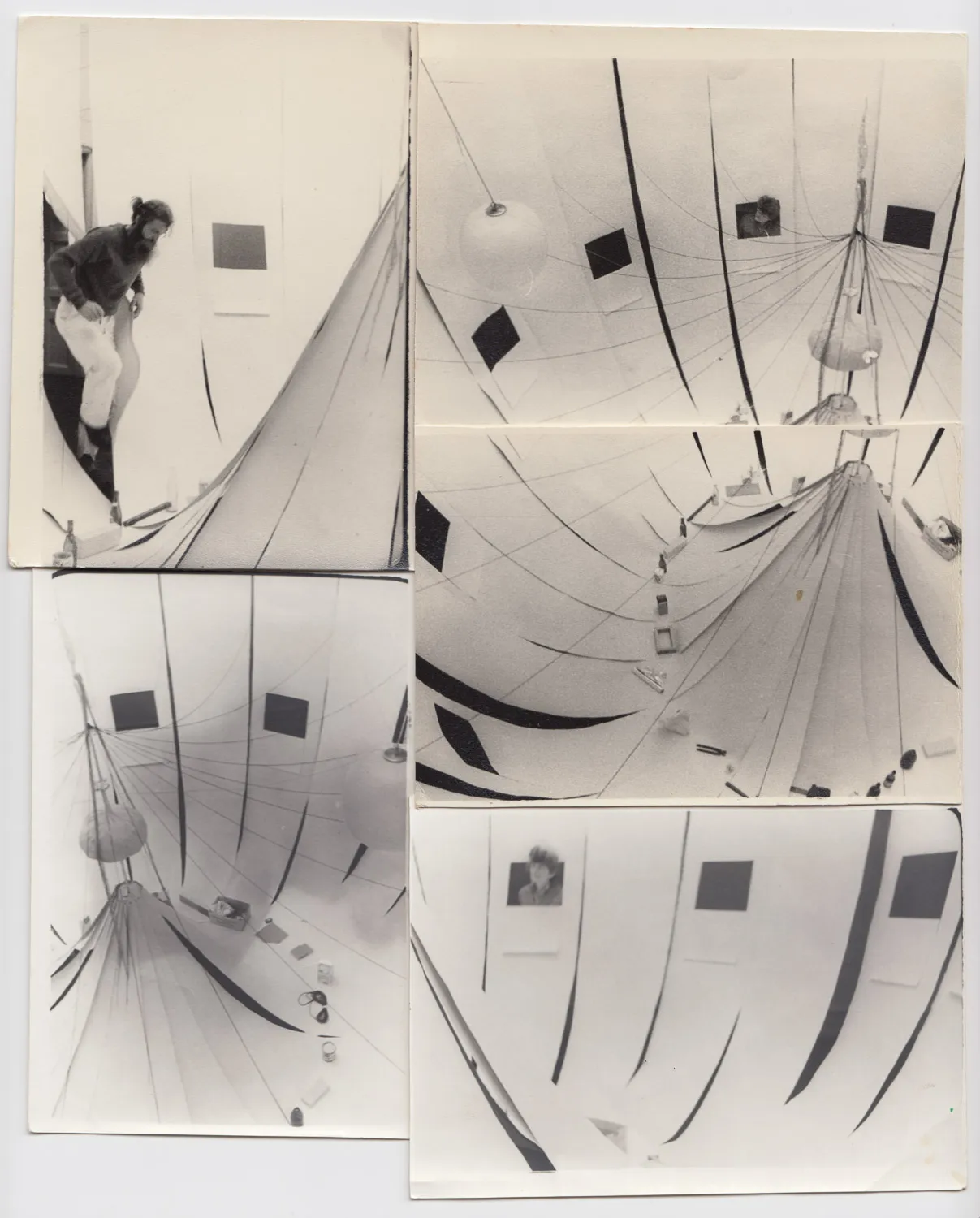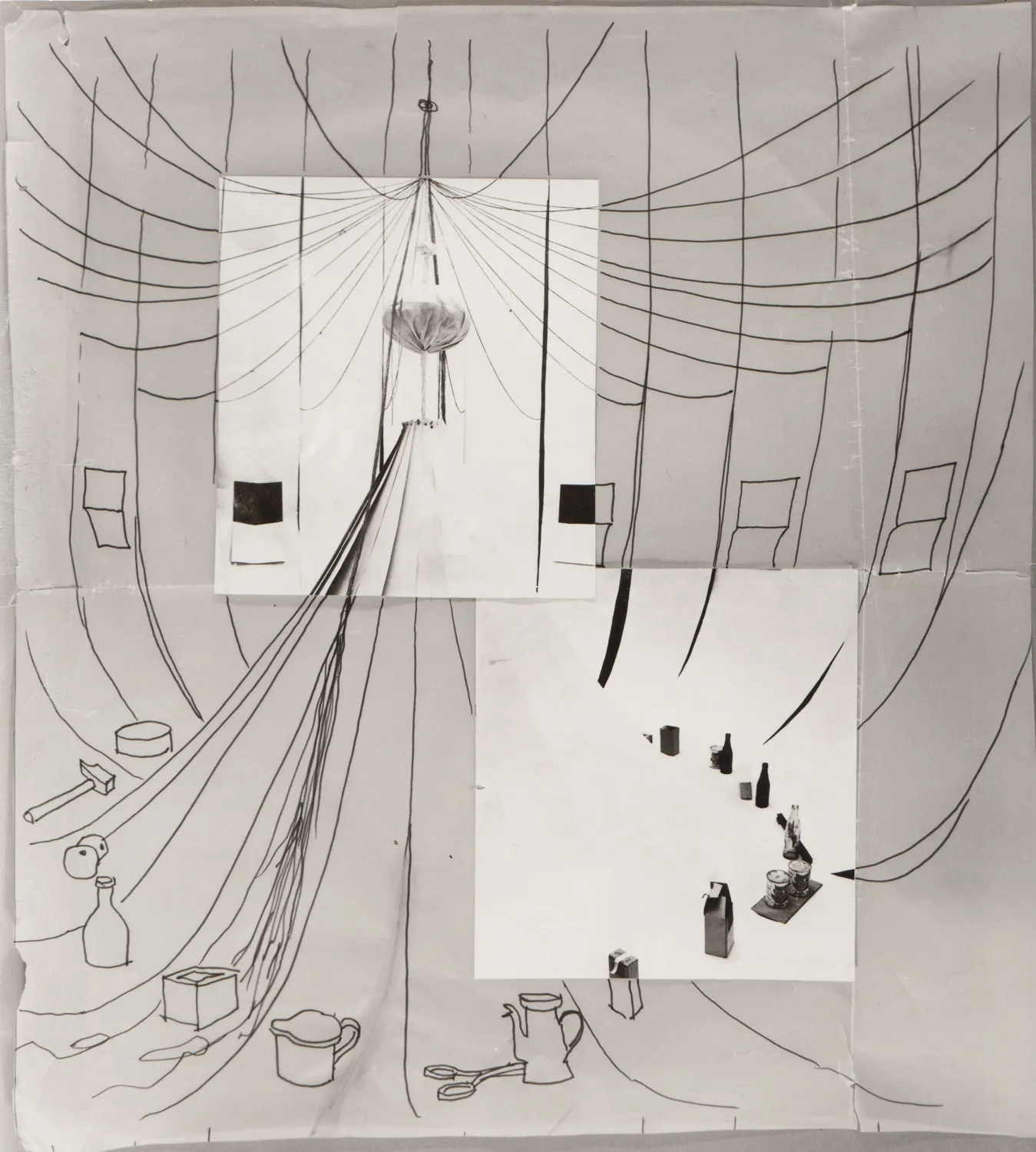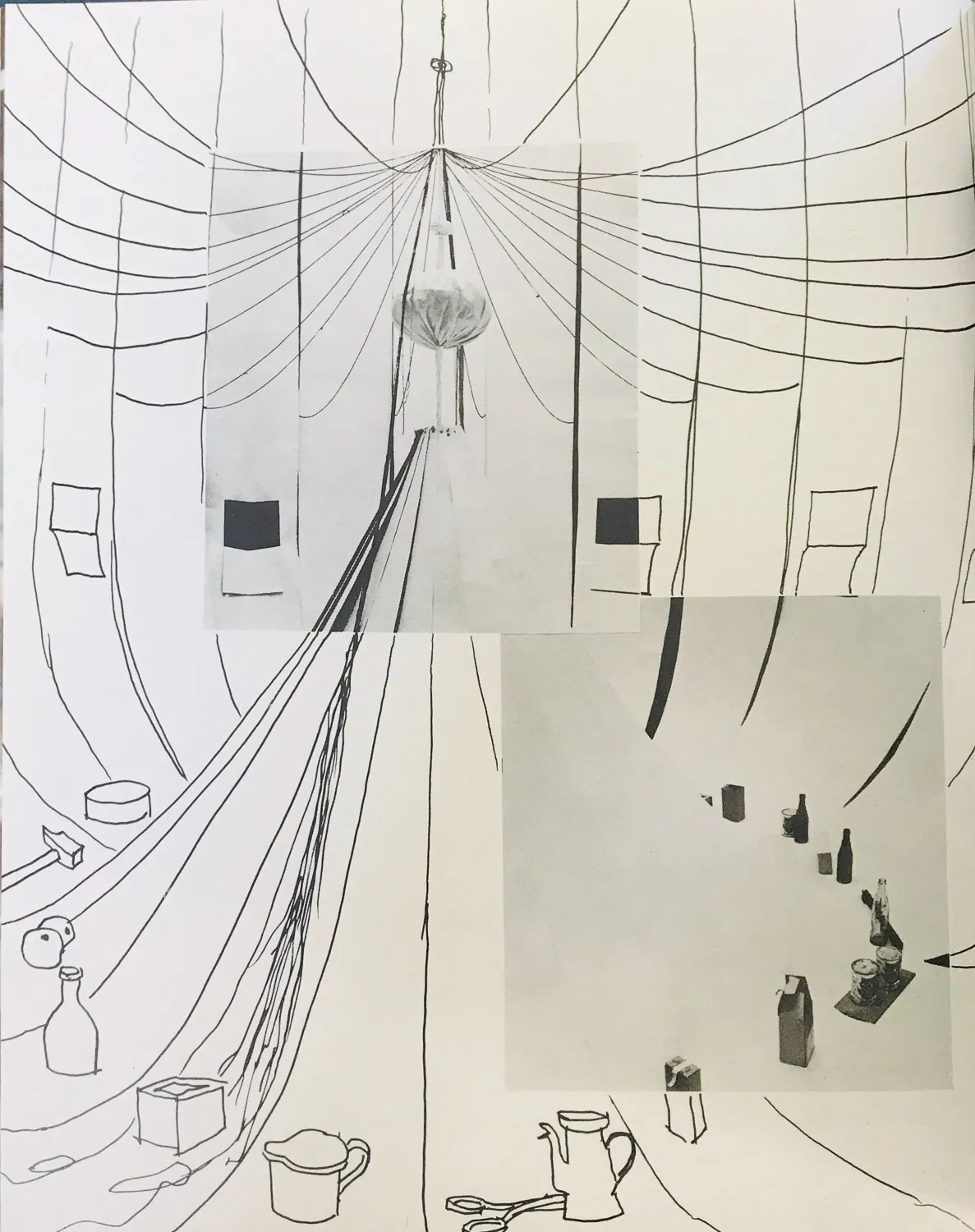installation
Papirblomst
In the sculpture The Flower at the Spring Exhibition in 1969, the emphasis was solely on the interior of the sculpture, while the external form could hardly be perceived. It consisted of white roll paper hung from the ceiling to the floor in a circle, so that the lengths met in the middle of the room and were lifted up into a cone tip that was finished with a ball of pink tissue paper. This cone shape was surrounded by a circle of objects, all of which referred to the everyday situation on the construction site where he was participating in a self-builder commune. In addition, the objects had the function of holding the paper in place.
The sculpture filled an entire room, there was only just enough space for the spectators to walk around it and look into it through the square holes that were cut in every other paper length at eye level. They could look into the inner spatial situation. They experienced this situation and the other spectators, whose faces were seen in the other holes in the paper wall. A human community arose nurtured by experiences on the social common level, to which the everyday objects referred.
Poul Gernes has said that the real thing about The Flower was the communication between the people who were looking in through the various holes. The next step was to allow the spectators to step into the sculptural situation itself, which happened some months later when he built a public bath at Festival 200 at Charlottenborg, where the audience took showers and went to the sauna in the hot summer days.
Jane Pedersen: Der er dejligt i Danmark – viser Poul Gernes. Copenhagen 1971 s. 98-100. Excerpt. Translation by Klara Karolines Fond.

Papirblomst
Photo: Poul Gernes

Papirblomst
Photo: Poul Gernes

Papirblomst
Photo: Poul Gernes

Papirblomst
Photo: Poul Gernes